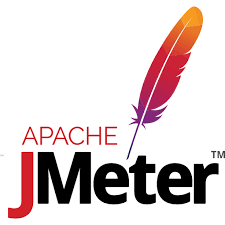Software Test Automation With Java-Selenium

Software Test Automation With Java-Selenium
In the field of IT, the importance of automation, robotic process automation (RPA), and bots has grown significantly over time. This growth is driven by the increasing complexity of business requirements, the need for agile development practices, and the demand for high-quality software solutions. Over past 20 years, functional test automation created significant impact on software development, driving efficiency, accuracy, and overall quality. By automating the execution of functional test cases, organizations can achieve faster and more thorough testing of critical functionalities. This automation enables the repeated execution of tests, allowing for quick identification of defects and ensuring that software updates or modifications do not introduce unintended issues. Functional test automation enhances the reliability of test results by eliminating human errors and inconsistencies. It also enables teams to achieve greater test coverage, including various scenarios and data combinations that would be impractical to cover manually. Ultimately, functional test automation empowers organizations to deliver high-quality software with reduced time-to-market, increased efficiency, and enhanced customer satisfaction. In DUXCON’s Test automation with selenium is a framework to learn functionalities of automation with 70% hands on exercise, assignments.
What you'll learn
- Introduction to Java Programming
- Java comments and control statements
- Writing Java Programs
- Datatypes, Objects, Classes, Functions
- Understanding memory allocations, operators, strings
- Understanding OOPS, Inheritance, methods, interface
- Understanding Keywords, Encapsulations
- Understanding Array, exception and file handling
- Programming with java concepts learnt
- Automation Basics
- Selenium WebDriver locators, X-Path
- Setup of selenium
- Handline Browser, page level & element, screenshot
- Handling multiple browser
- Handling interactions with Page elements like text box, checkbox, clicks, text area
- Handling interactions with Page elements like buttons, list etc
- Handling waits, sleep functions
- Usage of Drivers to handle page functions
- Usage of action class like mouse over, drag and drop, tooltip, keyboard actions etc
- Handling windows popups, dropdowns
- Framework with Real time applications with hybrid driven (data driven modular driven)
This course includes:
- Timeline: 100-110 Hours
- Mode: Online
- Theory : 25%
- Hands On Assignments: 65%
- Discussion : 10%
Fill the form
To Register






What is industry standard software testing?
Industry standard software testing refers to the widely accepted and recognized practices, methodologies, and techniques used in the software testing process, ensuring quality, reliability, and adherence to industry best practices, standards, and regulations, ultimately delivering robust and bug-free software products.
What is Requirement review in software Testing?
Requirement review in software testing is a process of thoroughly examining and evaluating software requirements to ensure clarity, completeness, consistency, and testability, aiming to identify and address potential issues, ambiguities, or gaps early in the software development lifecycle, thereby minimizing rework and improving the overall quality of the end product.
What is a Test strategy?
A test strategy is a high-level plan that outlines the approach, objectives, scope, and resources for software testing. It defines the testing methodologies, techniques, and tools to be used, and provides guidance on how testing activities will be conducted to ensure effective and efficient testing of the software application.
What is a Test managenet ?
Test management involves planning, organizing, and controlling the activities and resources related to software testing. It encompasses tasks such as test planning, test case creation, test execution, defect tracking, and reporting, ensuring that the testing process is well-structured, coordinated, and aligned with project objectives, timelines, and quality standards.
What is Alfa and Beta Testing ?
Alpha testing is performed by a limited group of users or internal testers to evaluate the software for defects, usability, and overall functionality before its release for end customers or user group, typically in a controlled environment. Beta testing involves releasing the software to a larger audience or external users (typically by end customer/users) to gather feedback, identify issues, and assess the software’s performance, compatibility, and user satisfaction, often in a real-world environment.
What is test status?
Test status refers to the current state or condition of a test or a set of tests. It provides information about whether the test has been executed, passed, failed, or is pending, indicating the progress and outcome of testing activities, aiding in tracking the overall testing progress and identifying any issues that need attention.
What is Java -Selenium in software automation ?
Java-Selenium is a popular combination for automating web browser interactions and testing in the field of software development. Java serves as the programming language, while Selenium provides a robust framework for automating web browsers, enabling efficient and scalable web application testing.
What is the difference between sanity and smoke test ?
Sanity testing is a narrow and focused set of tests executed on a modified or fixed part of the software to ensure that the recent changes have not introduced any major issues or regressions, validating the basic functionality and stability of the software. Smoke testing, on the other hand, is a quick and superficial set of tests performed on the entire system to verify that the critical functionalities are working as expected and the build is stable enough to proceed with further testing, providing a “smoke” test to identify showstopper issues early on.
What is a Peer Review?
A peer review is a collaborative evaluation process where colleagues or team members examine and provide feedback on each other’s work, such as code, documents, or designs, to ensure quality, correctness, and adherence to standards, promoting knowledge sharing, learning, and continuous improvement within the team or organization.
What is defect seepage?
Defect seepage refers to the situation where defects or issues that were not identified during testing or quality control processes manage to reach production or end-users, impacting the software’s functionality, performance, or user experience, highlighting potential gaps or weaknesses in the testing and quality assurance practices.
What is the difference between load testing and stress testing?
Load testing involves subjecting a system to realistic workload scenarios to assess its performance, response times, and scalability under normal or expected usage conditions, ensuring that it can handle the anticipated user load effectively. Stress testing, on the other hand, involves pushing a system beyond its normal capacity limits, typically by increasing the workload or resources, to evaluate its behavior, stability, and robustness under extreme conditions, helping identify the breaking points and potential failure modes of the system.
What is Non-Functional software testing?
Non-functional software testing focuses on evaluating the characteristics of a software system that are not directly related to its specific functionality. It involves testing aspects such as performance, security, usability, reliability, compatibility, and scalability, ensuring that the software meets the desired non-functional requirements and delivers a satisfactory user experience.
What is the difference between selenium web driver and selenium IDE ?
Selenium WebDriver is a powerful tool for automating web browsers using programming languages like Java, Python, or C#. It provides flexibility and extensive capabilities for creating complex automation scenarios. On the other hand, Selenium IDE is a simpler, browser-based tool primarily used for recording and playing back user interactions, making it easier for beginners to create basic automated tests without the need for coding.
Why Testers need to know the devops framework ?
Testers need to know the DevOps framework to align their testing activities with the DevOps principles and practices, ensuring seamless collaboration and integration with development and operations teams. This knowledge enables testers to understand the deployment pipeline, automation processes, and infrastructure configurations, allowing them to effectively test and validate the software in the context of the entire DevOps lifecycle, resulting in higher-quality releases and faster time-to-market.